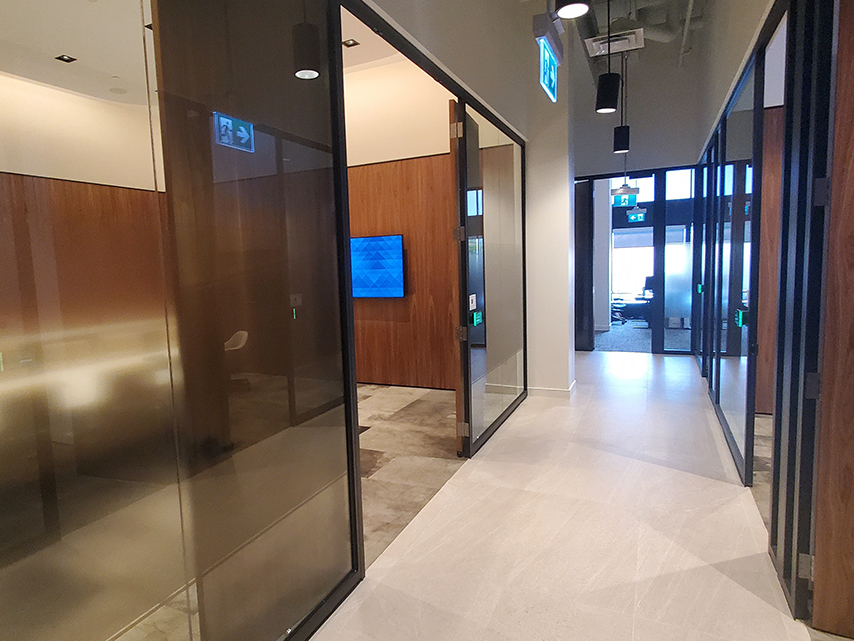Stoneridge Ice Centre in Burlington, Ont. signs up for localized private utility service.
Sky-high electricity rates in Ontario have had a big impact on recreational facility operations, especially skating arenas, but those days may be changing.
The energy supply in Ontario comes from large centralized sources—primarily power stations using nuclear, gas and hydro. More recently, renewables like wind energy and solar also feed into the power grid, but these renewable sources are intermittent.
For arena operations, which require refrigeration plants, mechanical ventilation, heating, air dehumidification and adequate lighting, significant amounts of consistent power is a necessity. Facilities like these are seeking new, affordable and reliable sources of energy that keep pace with the changing energy landscape and meet their demand, while lowering their carbon footprint, if possible.
Stoneridge Ice Centre, formerly known as the Wave Twin Rinks, in from the GRID
Burlington, Ont., has adopted a new alternative energy platform that allows it move away from the public utility grid. The facility has signed up with Oakville, Ont.-based OOM (for Order Of Magnitude) Energy, a private utility that provides an alternative to the traditional public grid by producing and distributing electricity on site.
Stoneridge is a dedicated hockey training centre with two full-size rinks and two mini pads. It has a dryland training centre for hockey, a pro shop, physiotherapy clinic, and a fully licensed restaurant. Its programming covers all areas of hockey right from learn to skate, house league, rep hockey, and pathway to Junior A hockey, adult hockey, camps and clinics.
As with any arena facility, Stoner- idge has high energy costs, and in recent years the increases have been dramatic. However, by adopting the private utility option, power costs for Stoneridge will be lowered, and their electric power will be more reliable.
The onsite combined heat and power system put in place in January also provides energy efficiencies.
The arena industry has been particularly hard hit in Ontario by rising electricity rates. For example, a facility with a single ice pad is looking at a cost of about $180,000 per year for electricity. A facility with two ice pads could have costs double that. By using a private utility—which creates and distributes electric power for the facil- ity alone—estimated savings are about 20%, which in the case of a large operation like Stoneridge could amount to $70,000 per year.
OOM’s Integrated Energy Platform (IEP) is a portable, onsite power system that uses clean technologies (including trigeneration or cogeneration, batteries, carbon sequestration and more) combined with sophisticated software, resulting in cleaner power that is reliable and secure. The multiple onsite sources of power are fully redundant and independent of weather events, so the systems are not constrained by the geographic boundaries of the public utility, nor by an unreliable and unsecure aging infrastructure.
The backbone of the Stoneridge IEP includes two 250kW natural gas cogeneration systems. The fully automatic engines can produce rated power, in parallel with the local utility or independent of the local utility (islanded). Essentially, it is a dedicated power plant in a box which includes the generators, a glycol cooling system, overhead exhaust system, radiator, heat-exchange system, and a roof- mounted fan evaporator. It is CSA- and TSSA- compliant.
The generators are located in a self-contained, walk-in, weatherproof enclosure that is half the size of a shipping container. The bare system produces noise levels consistent with 60 db at 50 feet. However, once placed in the sound-attenuated enclosure, noise is reduced to a level that is no louder than an idling car.
The system is also synchronized to the public utility which serves as back- up power. Thus, in this case the private utility does not necessarily replace the public grid, but works in tandem.
Also onsite is a containerized, 480- volt main switch paired with an automated-transfer switch which can toggle between the IEP and utility. Inside, the company’s cloud-based intelligent software manages and monitors the facility in real time, which ensures uptime, optimizes the IEP’s operating parameters, and provides insights used for safety, maintenance, production and security purposes. This enables 90% of the maintenance to be done remotely from desktop and mobile devices. Although the system is fully automated, it still requires local maintenance technicians to perform onsite general maintenance.
When contemplating the evolution from centralized power production to widespread, small-scale distributed- energy production, one only needs to look back at the evolution of computers. The central idea of the Dedicated Energy System is to generate electricity for localized use; it is the equivalent of going from an old mainframe computer that takes up an entire room to an iPhone in your pocket.
Just as cellphones liberated us from being tied to landlines, OOM envisions a future where Dedicated Energy Systems liberate users from being tied to the inflexible nest of wires that comprises the transmission grid.
Under a long-term contract, Stoneridge now pays a fixed monthly fee for energy under a predictable Energy Services Agreement at a rate less than what the public utility currently charges.
The system comes in a portable box placed outside the complex. Power generated is not shared, but is the facility’s own power. There are no hydro-electric poles, government money, or subsidies involved. That means brownouts and blackouts are eliminated, and the facility receives a safe and reliable source of energy.
But the benefits go beyond cost savings. OOM’s engineers also showed Stoneridge how to reduce water consumption and create their own snow-melting system using reclaimed heat. Says Anthony Miele, Managing Partner of Stoneridge Ice Centre: “The effect on our total costs and on our bottom line will be significant.”
According to the IIHF (International Ice Hockey Federation), there are more than 3,300 indoor ice hockey rinks in Canada, and high electric- ity costs impact them all. But any rink could benefit from the private-utility solution. So could the NHL. In fact, OOM is talking to an NHL team about using the system for its arena.
OOM owns and finances all its projects independently, so customers are not burdened with upfront capital cost, and as a private utility it offers fixed monthly energy costs. Existing installations include: manufacturing facilities, food-processing plants, hotels, condominiums, commercial buildings, gas-treatment facilities and greenhouses.
From the beginning, the overriding mission statement of the private utility has been: To combine our innovative energy solution, expertise, and commitment to the harmonious balance of people, planet, and profit to help build a truly connected and sus- tainable world.
The attached image to the article is the Interior of the power-generating unit located outside the arena.
Author: Craig Clydesdale, founder and CEO of OOM Energy Inc., has over 30 years of senior management experience in the energy industry, and has specialized in power marketing, facility operations, environmental sustainability, and elec- trical and oil and gas process controls.







